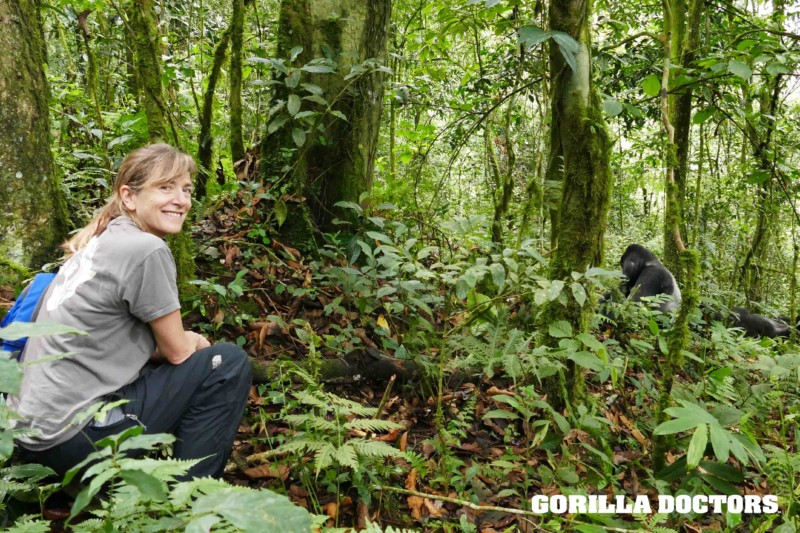Gorilla Doctors 20/20: A Letter from our Executive Director
By Gorilla Doctors Staff on Friday, January 10th, 2020 in Blog.As the person with the honor and responsibility of leading Gorilla Doctors, I am still so amazed by Dian Fossey’s foresight in first identifying the need for a gorilla veterinarian in Rwanda in 1985 – she knew then that protecting the health of one gorilla could impact the entire species. And here we are, almost 35 years later, with the highest population of mountain gorillas ever recorded – 1,063.

Dr. Kirsten Gilardi, Executive Director & Chief Veterinary Officer, Gorilla Doctors. Uganda, May 2019.
Of course, this extraordinary achievement was, and continues to be, the result of a collaboration of governments, NGO’s, institutions, tourists, donors and key stakeholders from around the world. As we begin this new decade, it is this monumental global effort, and Gorilla Doctors’ critical role, that energizes me every single day. The Bwindi-Sarambwe population survey results really crystallized for me the importance of our work – that despite a very busy year for our Uganda team in caring for many ill and injured patients, gorilla numbers in Bwindi park are rising. Every time we save an individual gorilla, it has population-level impact.
When Gorilla Doctors began with one American veterinarian, Dr. Jim Foster, stationed at the Volcanoes Veterinary Clinic, we were already imagining a future where the veterinary care would be led by people living in gorilla range countries. Today, besides myself and our small US-based team, Gorilla Doctors is comprised entirely of Rwandan, Ugandan and Congolese veterinarians and staff working in five national parks across all three range countries of the eastern gorilla. They are advancing Gorilla Doctors into a new era in which our presence and position in the region is stronger than ever, and where we are working closely with government partners as they invest in wildlife health and conservation.
While gorilla health is our core mission, we also conduct scientific research that informs and refines our clinical care and One Health approach. For the past 10 years, we implemented the USAID Emerging Pandemic Threats PREDICT project in Rwanda, Uganda and eastern DR Congo for the UC Davis One Health Institute. Our work sampling wildlife and people helped discover new viruses and their potential global impact; our work in communities elevated awareness of how human interactions with wildlife can have health consequences for people and wildlife. And the world is taking notice.
This past November, Dr. Benard Ssebide, our head veterinarian in Uganda, was invited by the U.S. Department of Defense to participate in a meeting of the Virus Threat Reduction Network in Washington, D.C. Members of our team traveled to Bali to present at the international PREDICT conference in September. And Dr. Eddy Kambale Syaluha, our head veterinarian in DR Congo, has been leading Ebolavirus preparedness & prevention workshops for park staff and their families since the 2018 outbreak first began.
Our hands-on veterinary care, our scientific research and our community health programs are the legacy of Dian’s original “20/20 vision” that the conservation of mountain gorillas was going to require veterinary medicine. Today, as the Executive Director and Chief Veterinary Officer for Gorilla Doctors, I am driven by an unwavering commitment to doing whatever I can as a veterinarian to ensure a healthy, stable and thriving wild eastern gorilla population. And I am still pinching myself: to have the opportunity to contribute to a wildlife conservation success story seemed like a pipe dream when I started veterinary school 30+ years ago, and here I am working with amazing people, in a beautiful part of the world, saving a magnificent animal.
To each of you who have believed in and supported Gorilla Doctors, I thank you. Your dedication inspires me and I look forward to achieving our conservation dreams together.
Happy New Year!
Sincerely,
 |
Dr. Kirsten Gilardi Executive Director & Chief Veterinary Officer Gorilla Doctors Saving a Species, One Gorilla at a Time |


 Donate
Donate